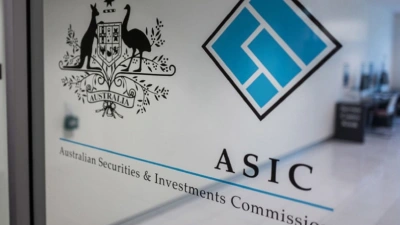Back to the future of financial planning
The year is 1982. Financial planning, as we know it, is yet to be born. Regulation is limited, and products are mainly restricted to the more traditional types offered by life offices and their range of new ‘unbundled’ products.
Life offices dominate the industry and have built vast sales teams of tied life agents. To attract and retain these agents, incentives include commissions (from 150 to 200 per cent of first year’s premium), fully serviced offices, and extended, fully paid overseas conventions.
In the mid 1980s, unit trusts (with entry fees of up to eight per cent) begin to emerge as a significant investment alternative. Money steadily flows into these unit trusts and the financial planning industry is under way.
The market correction of 1987 sees panic amongst investors, who rushed to redeem investments that have already suffered their greatest drop. The markets soon recover, but investor confidence takes far longer to do likewise.
The latter part of the 1980s and the early 1990s are dominated by the distribution grab — the growth at any cost mentality as the heavyweights elbow for market dominance.
Agent development loans (ADLs) come to the fore. These were substantial, interest-free loans to top agents to assist them ‘develop’ their businesses. They also had the effect of locking in the agents to that office and its products.
There are still hangovers from ADLs more than a decade later. Life offices justified the loans with claims that the cost of funds would be more than met by the margin made on the additional business written.
This strategy would have worked to attract distribution if only one player offered them. But once one started, the others soon followed, with the net result that the offices loaned out a lot of money to retain their existing distribution.
History has judged the merits of ADLs, and today many advisers are far more cautious about deals that may initially appear attractive, but have definite strings attached. The old adage ‘if it looks too good to be true, it probably is’ rings true.
The financial planning industry has come a long way since those days. One of the best testaments to this was the market correction of 1997.
Rather than see a repeat of the investor panic from a decade earlier, the key issue for investors was — ‘now that the market has dropped, should I put more money in?’ Congratulations to the industry and all those involved with it — advising, client servicing, and education programs really do pay off in the long run.
It is fair to say that during the early days of our industry, things went a little bit astray. The focus was more on product distribution than on building a sustainable client-focused business (be that at the institutional level or the advising level).
We then got back on track and delivered quality services to our clients. This trend continues today and will no doubt continue well into the future. Never before have so many financial planners done so well, yet never before have we had such a regulated environment, with lower margins and such a high degree of consumerism in which to operate.
But it won’t be smooth sailing. Even today there are those looking for shortcuts to product distribution and ways to get a bigger slice of the cake. From a distribution perspective, the theory is grab as much of the ‘value chain’ as you can and sooner or later someone will come along and buy you out. From an institutional perspective, the theory is ‘buy the distribution to go with the products’.
At the end of the day, as a financial planner, three questions must be asked:
What are your core values?
What are your core competencies?
What business are you in?
It is ironic that at a time when there are more opportunities for planners to deliver products and services to meet genuine client needs than ever before, many are moving away from their own businesses into institutionalised structures. Once institutionalised, the focus then favours distribution of the institution’s products.
The biggest single issue facing planners and dealer groups today is the question ‘how can I possibly be across everything that is available for my clients?’
The scope for the provision of advice to clients is broader than one individual can possibly manage. The opportunity for advisers to increase and diversify their revenue streams is at an all time high, and things will continue to get better.
This presents a fantastic opportunity for businesses to align and structure themselves to meet this challenge, yet to date (except in isolated cases), this hasn’t happened. Instead, we are seeing planners and dealer groups attempt to move up the value chain and chase margins from the distribution of platform and funds. The net result of this will be a margin squeeze at that end of the chain, which will result in either lower return of capital or reduced reinvestment in the business. My money is on the latter.
At the risk of appearing to look for the proverbial dark cloud amid all of this silver lining, this margin squeeze represents a real threat for the industry.
Even our brief 20 or 30-year history has shown that a successful, sustainable business model requires constant reinvestment in the business. The business and its systems need to evolve with the constant changes.
The revolutionary model — run your systems as long as possible then throw them out and start again with something new — is an extremely high risk strategy. The industry is littered with IT wrecks, not only in recent times, but over the past 15 to 20 years, where such strategies have failed.
Evolutionary development is more sound and lower risk — yet when coupled with vision and sound industry knowledge, can produce a sustained, leading edge result.
It is a pity we don’t place as much emphasis on researching our business models as we do on selecting the funds for our clients to invest in.
The key to success for advisers well into the future will be to avoid the industry noise and hype and focus on business and delivering value to clients.
The acid test for business ventures should be: does this add value to my (prospective) clients? If it doesn’t, it is unlikely to be sustainable because it’s the clients who are ultimately paying for it.
Paul Robertson is thenational manager fordealer groups at Sealcorp.
Recommended for you
ASIC has suspended the Australian Financial Services Licence of a Melbourne-based financial advice firm.
Despite industry criticisms, Financial Services Minister Stephen Jones believes the Labor government has moved the financial advice reform dial forward “significantly” during his term.
The Australian Institute of Company Directors has shared which issues are keeping financial services directors up at night, and how they compare to the sentiment of directors more broadly.
ASIC is seeking to publish firm-level data on the reportable situations and internal dispute resolution regime, in hopes that advice licensees will “lift their game”.














